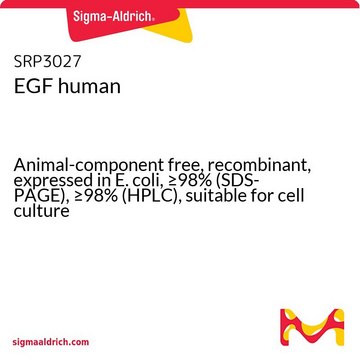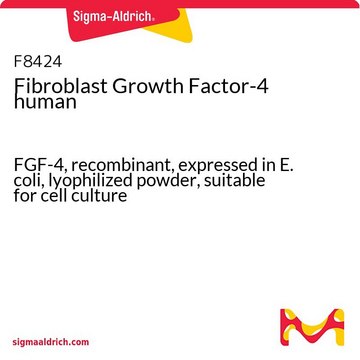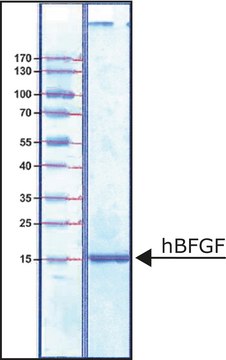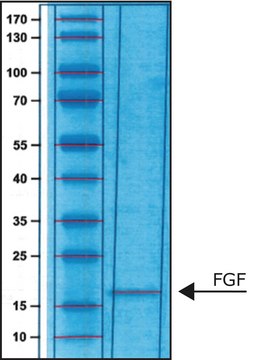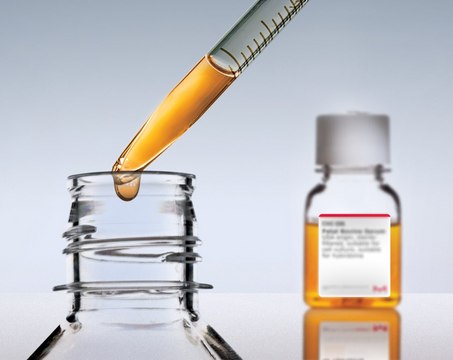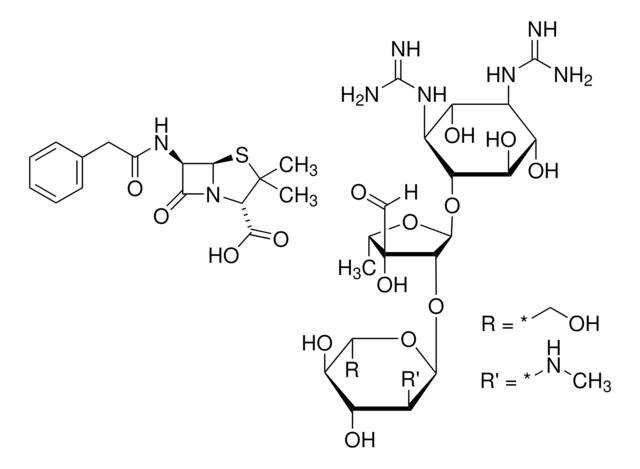推荐产品
应用
- as a media supplement in the differentiation medium to culture the pheochromocytoma (PC12) cells
- in immunocytochemistry and immunohistichemistry
- to study the therapeutic effect of serum treatment on cardiomyocyte viability
制备说明
Prepared by heating at 56 °C for 30 minutes.
储存分类代码
10 - Combustible liquids
WGK
WGK 3
闪点(°F)
Not applicable
闪点(°C)
Not applicable
个人防护装备
Eyeshields, Gloves
法规信息
Which document(s) contains shelf-life or expiration date information for a given product?
If available for a given product, the recommended re-test date or the expiration date can be found on the Certificate of Analysis.
How do I get lot-specific information or a Certificate of Analysis?
The lot specific COA document can be found by entering the lot number above under the "Documents" section.
How do I find price and availability?
There are several ways to find pricing and availability for our products. Once you log onto our website, you will find the price and availability displayed on the product detail page. You can contact any of our Customer Sales and Service offices to receive a quote. USA customers: 1-800-325-3010 or view local office numbers.
What is the Department of Transportation shipping information for this product?
Transportation information can be found in Section 14 of the product's (M)SDS.To access the shipping information for this material, use the link on the product detail page for the product.
Why is serum Heat-Inactivated (HI)?
Heat inactivation of serum is performed to inactivate complement (which can cause cell lysis or downstream problems in immunoassays). If there are immunoglobulins present in the serum that can bind to the cells in culture (either specifically or non-specifically), there is a chance for antibody-mediated complement cytotoxicity (ADCC, causing cell death). It may also reduce the titer of some mycoplasma and some viruses. Often, heat-inactivated serum is used because of the adoption of a previous protocol. It is mainly used when culturing hematopoetic cells or performing immunological type assays such as mixed-lymphocyte reactions or neutralization assays.FBS may not be heat inactivated as this is not required for all applications. It limits the loss of the other protein activity that may be minimally present in the serum.A protocol for heat inactivation:1. Allow serum containers to come to room temperature. Swirl bottles of serum immediately before adding to the water bath.2. A water-filled control bottles (T1) should be placed in a 56 °C water bath. Place the containers in the water bath up to the serum line. Do not completely submerge the containers. When the temperature of T1 reaches 56 °C, start the timer set for 30 minutes. Do not allow temperatures to exceed 56 °C. Higher temperatures will denature the proteins, gel the serum or alter the performance of the serum.3. Gently swirl the bottles every 5 to 10 minutes while in the water bath and check the temperature in the control bottle. It is not uncommon for plastic containers to bow slightly after heat treatment. This is not harmful to the serum.4. At the end of 30 minutes remove the serum bottles from the water bath. Aliquot the serum into smaller volumes and freeze. Sigma-Aldrich does not recommend repeated thaw-freeze cycles.
My question is not addressed here, how can I contact Technical Service for assistance?
Ask a Scientist here.
商品
Find answers to frequently asked questions (FAQs) about FBS and other serum products, and links to related products.
查找有关FBS和其他血清产品的常见问题解答(FAQ)以及相关产品的链接。
实验方案
How to stain organoids? A complete step-by-step protocol for immunofluorescent (IF) and immunocytochemical (ICC) staining of organoid cultures using antibodies
我们的科学家团队拥有各种研究领域经验,包括生命科学、材料科学、化学合成、色谱、分析及许多其他领域.
联系技术服务部门